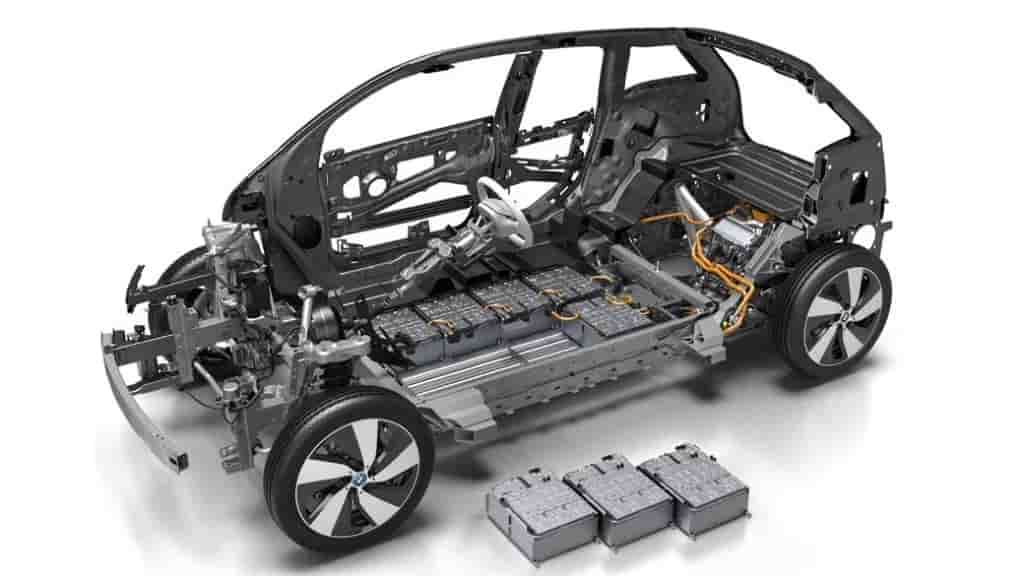PET preforms – EV-cars – Recycling 29-04-2023 - Arhive
PET preforms – EV-cars – Recycling
-Solvolysis is the best method for recycling biocomposites from the aeronautics sector
The aviation industry is increasingly using biocomposite materials in its components to mitigate their environmental impact. Biocomposites use natural fibres for reinforcement and resins from renewable sources. However, the novelty and heterogeneous nature of these thermoset materials and the fact that they lack carbon fibres, which have a high market value, make it difficult to find an efficient management solution when these materials become waste at the end of their useful life.
AIMPLAS, and the Dutch research centre TNO have completed the ELIOT Project, which involved carrying out an in-depth review of current recycling technologies for the composites and biocomposites used in the aeronautics sector in order to analyse the best alternatives on a pilot plant scale that are also technically and financially feasible. As a result of the study, solvolysis was found to be the best method of the 12 technologies analysed for recycling six different biocomposites. PET preforms – EV-cars – Recycling
This study helps promote cost-effective recycling technologies that enable the aeronautics industry to guarantee the sustainability of its components in the search for new solutions aligned with the circular economy.
The results show that pyrolysis emits 17% more carbon dioxide and consumes twice as much heat as solvolysis, which entails additional associated costs. Solvolysis uses solvents as a substitute for heat, but these solvents are recovered with great efficiency and reused in the process. The study has also shown that solvolysis works even better on large biocomposites.
For both pyrolysis and solvolysis, additional purification steps are required to be able to use the pyrolysis liquid and the distilled product, respectively. These estimates were made based on a processing plant with a capacity of 10 kilotonnes of biocomposites per year.
Other technologies analysed in the study included mechanical recycling, dissolution, enzymatic degradation, gasification and composting.
The ELIOT Project received funding from the European Union’s Horizon 2020 research and innovation programme within the framework of the Clean Sky Joint Technology Initiative under grant agreement number 886416. PET preforms – EV-cars – Recycling
Source: Aimplas
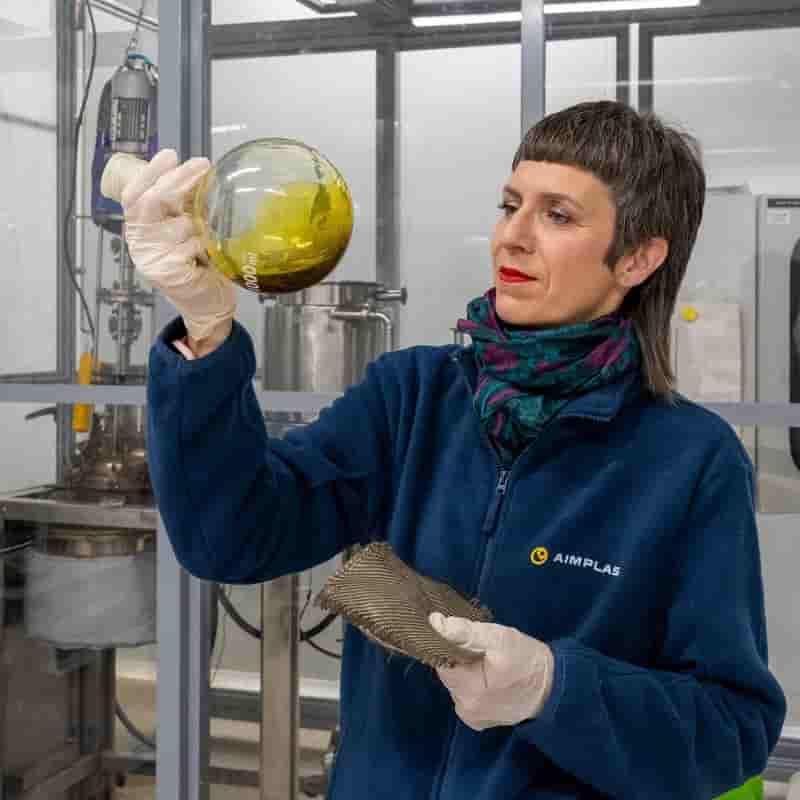
Copyright: Aimplas
-Ahlstrom launches renewable automotive filter media
Ahlstrom has launched a new range of renewable, lignin-based filter media for automotive applications.
Ahlstrom Eco is described as a technology that supports the increasing sustainability demands of the global transportation market and offers a new choice for filter manufacturers.
Using a significant amount of bio-based, renewable lignin rather than fossil-based resin, the mechanical properties and the durability of the filter media, even in challenging environments, are said to be maintained. PET preforms – EV-cars – Recycling
According to Ahlstrom’s initial estimates, the new lignin-based impregnated filter media displays a lower carbon footprint than a standard fossil-based resin media. Additionally, the lignin-based impregnation recipe brings a significant reduction, between 50-70%, of formaldehyde emissions during the curing process.
Ahlstrom is partnering with Tecfil, a major automotive filter manufacturer in Latin America, which is incorporating Ahlstrom Eco into a final filter design. The new product will be launched at the Automec exhibition in Sao Paolo, Brazil on April 25-29.
“Ahlstrom Eco is a perfect example of how we are living up to our purpose to Purify and Protect with every fibre for a sustainable world, and our commitment to innovate fibre-based specialty solutions to our customer’s needs and to help them solve some of the global challenges,” said Tamara Quatrano, VP, R&D, and Product Development Filtration. “We are pleased with the joint activities with Tecfil and proud to be able to offer this new, renewable solution to the market.:
Flavio Montanari, Industrial Director Tecfil, added: “An outstanding collaboration between our two teams – Ahlstrom and Tecfil – resulted in a new, environmentally friendly filter solution. PET preforms – EV-cars – Recycling

-Belgian investor expands PET preforms factory in Romania
Belgian plastic and preform bottle manufacturer Resilux plans to expand its factory in northern Bucharest by about 30% under a EUR 3 mln investment, which also involves the installation of a recycled PET (rPET) pellets production line, according to sources consulted by Profit.ro.
Resilux owns a plot of about 3.7 hectares in the northern part of Bucharest, where it already operates a PET preforms production facility with a surface of about 10,000 square meters. The new hall will increase the total area of the factory to more than 13,000 square meters.
The raw material for the rPET pellets will be brought from the same group’s units in Hungary.
The Romanian factory Resilux Packaging South East Europe, with 55 employees, reported a turnover of EUR 22.5 mln in 2021, a historical peak, and a net loss of about EUR 630,000. PET preforms – EV-cars – Recycling
Austria’s Alpla and partners start production at EUR 7.5 mln PET recycling plant in Romania
Belgian producer Resilux was bought last year by Pascal Vanhalst’s family investment fund Quva in a deal that valued the company at EUR 471 mln.
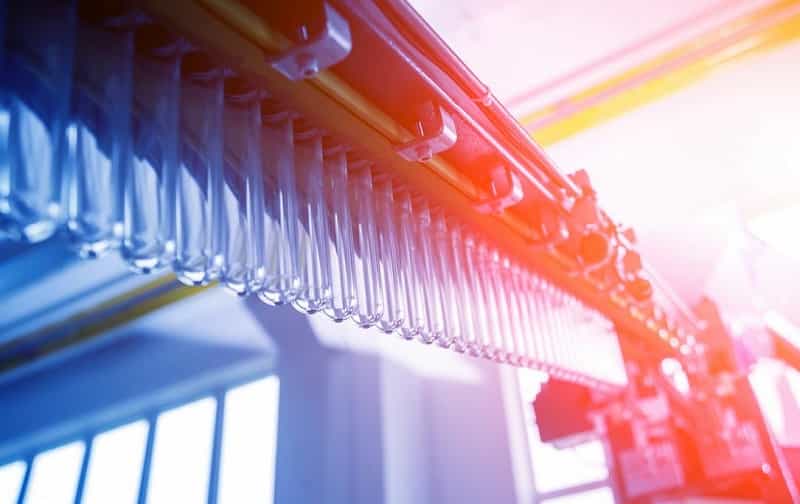
-Mechanical, chemical tech advancements announced
A research institute developed a recycled plastic deodorizing process, and a packaging maker installed a system for recycling heavily printed LDPE film scrap. The following are details on those and other recent technology-related announcements:
Deodorizing technology: A German research institute has developed a method of using pressurized water to deodorize recycled plastics. According to Phys.org, the Fraunhofer Institute for Structural Durability and System Reliability LBF developed the process to remove odors from HDPE packaging, then it employed infrared spectroscopy and mass spectrometry to measure how much of a tracer fragrance was removed, thus quantifying the method’s effectiveness. The story notes that the method, which has been employed at lab scale, also removed contaminants and short-chain HDPE.
Chemically recycled PET bottle: Beauty products brand Garnier announced a 100% RPET bottle made with plastic that was chemically recycled through Loop Industries’ depolymerization process.
Garnier used the recycled resin in a Micellar Cleansing Water All-in-1 bottle. The bottle will start landing on shelves this month in the U.S. and France. Based in Terrebonne, Quebec, Loop uses a low-heat, no-pressure technology to break down PET scrap into monomers, which can be used to make new PET. PET preforms – EV-cars – Recycling
Closed-loop automotive plastics recycling: Several companies have collaborated to chemically recycle automotive scrap plastics from auto shredder residue (ASR). Chemical company Eastman announced on April 19 the completion of a closed-loop project involving Eastman, the United States Automotive Materials Partnership LLC (USAMP), automotive recycler PADNOS and global automotive interior supplier Yanfeng. Through the project, PADNOS supplied a plastic-rich fraction of ASR to Eastman, which used its carbon renewal technology to convert the material into synthesis gas, which was then used to produce polyester and cellulosic thermoplastics. The resins were further formulated and sent to Yanfeng, which molded the plastic into auto parts that met Ford, GM and Stellantis requirements, a press release stated.
Extrusion system installation: Canadian packaging maker Polykar purchased an EREMA system to recycle heavily printed LDPE production scrap from blown film production. In a press release, EREMA noted that the company purchased an INTAREMA 1310 TVEplus with backflush filter, with the system coming on-line in December 2022 at Polykar’s new 50,000-square-foot Edmonton, Alberta plant. The system can produce up to 4,000 tons of pellets a year. PET preforms – EV-cars – Recycling
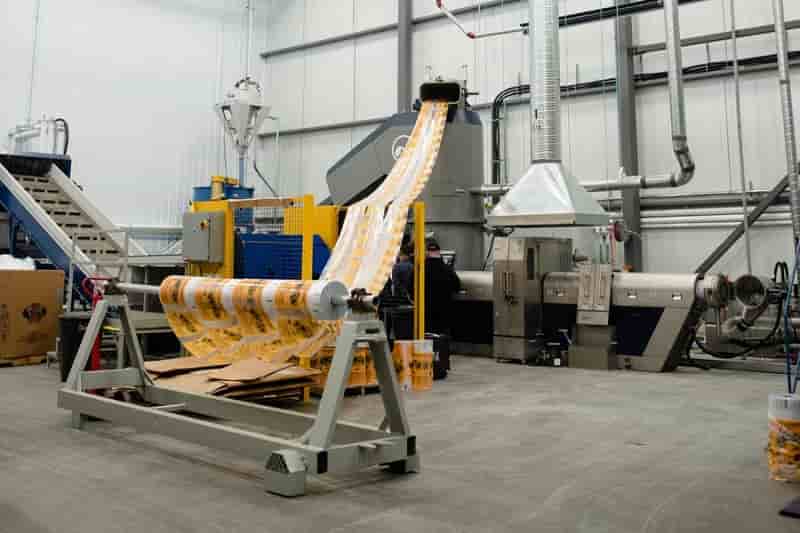
-A call to ensure strong push for circularity
Following the EU Commission’s proposal for a Packaging and Packaging Waste Regulation (PPWR), EuRIC publishes its position paper on the proposal in view of ongoing discussions in the Council and the
While the European recycling industry strongly supports the proposal, certain barriers and loopholes for more circular packaging still need to be overcome, according to the European Recycling Industries’ Confederation (EuRIC).
First and foremost, it is of overarching importance to ensure recyclability of all packaging placed on the market in the EU as soon as possible. Building on existing mature design for recycling (DfR) criteria, a stringent timeframe is required for the development and applicability of DfR criteria and recyclability at scale. PET preforms – EV-cars – Recycling
Stricter rules are also needed on compostable packaging for being allowed to be placed on the market in the EU. As proposed, the current provisions would send an unclear sorting message to consumers and disrupt functioning plastic sorting and recycling processes.
As a key driver for more circular packaging in the EU, binding minimum recycled content targets are paramount for investment and planning stability in the recycling sector. Derogations based on prices or availability would contradict the logic of binding targets in the first place and hamper the transition towards a more circular economy. At the same time, the achievement of binding targets shall be ensured through ambitious packaging collection targets of minimum 80% for all packaging types applicable in all Member States by 2029.

-Chemical recycling a flashpoint in FTC Green Guides review
How to advertise and label plastic made from chemical recycling is shaping up to be an early flashpoint in the Federal Trade Commission’s yearslong process to rewrite its Green Guides.
As the agency’s comment deadline closed April 24, plastics groups were giving the FTC polling that shows that more than 80 percent of the public considers it OK to label a plastics package or product made with chemical recycling as containing “recycled content.”
One of the key questions FTC asked for input on when it launched the rewrite in December was how consumers perceive labels like recycled content and recyclable.
The American Chemistry Council said polling it conducted showed public support for advanced recycling technologies, as did the Plastics Industry Association in a similar poll.
“Consumers are increasingly interested in supporting the environment through their purchases,” said Joshua Baca, ACC’s vice president of plastics.
“They are asking for packaging to contain more recycled plastic and that we increase recycling after use, and the data shows people want advanced recycling to be part of the circularity solution.” PET preforms – EV-cars – Recycling
But a coalition of environmental groups urged FTC to reject labeling plastic from chemical recycling as recycled content.
The group, which includes Greenpeace USA, the Center for Biological Diversity and the Last Beach Cleanup, said companies should not be able to use a technical method known as mass balance to label chemical recycling as having recycled content.
“The chemical lobbyists have created a new hoax to try to convince the FTC to allow chemical recycling to count as recycling,” said Judith Enck, president of the group Beyond Plastics, and a former regional administrator in the Environmental Protection Agency. “This is a critical issue, and the FTC should forcefully reject this shameless attempt to fool the public.” PET preforms – EV-cars – Recycling
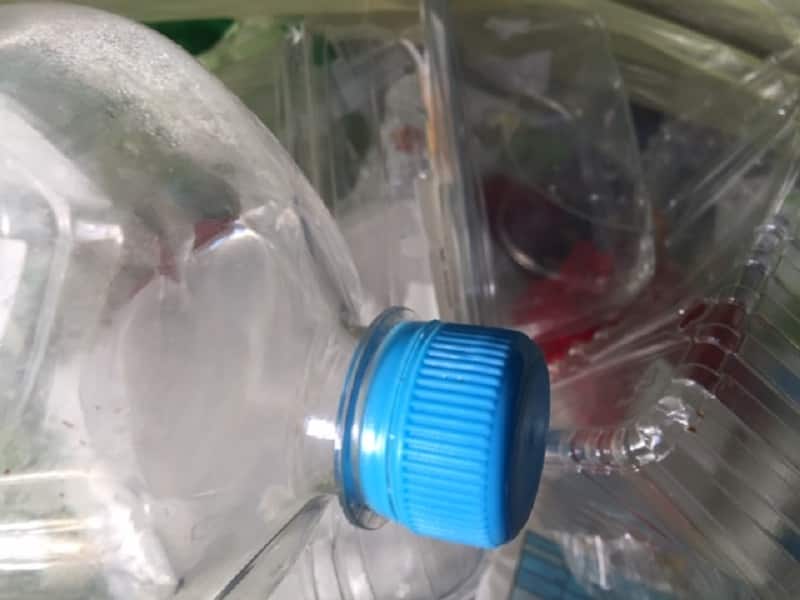
Chemical recycling a flashpoint in FTC Green Guides review
-How safe are electric cars?
Batteries and high-voltage electrical systems can pose a fire risk – but in reality, EVs are just as safe as other cars
Many potential EV owners are put off by range anxiety, but a number also worry about safety. Powered by highly flammable batteries and packing high voltage electrical systems, it’s easy to see how these machines could give cause for concern. In reality, though, electric cars are just as safe as any other, thanks to a range of neat features aimed at protecting occupants and other road users. Here’s our comprehensive EV safety guide.
First off, it’s important to keep in mind that all electric cars are built to meet the same strict design and manufacturing regulations as their petrol and diesel counterparts. Essentially, they go through the same carefully wrought process, with an almost obsessive amount of time spent on making these machines as safe as possible. And to highlight the hard work, most manufacturers then subject their EV offerings to Euro NCAP assessment, with almost all performing as well as similarly-sized and equipped internal combustion models. PET preforms – EV-cars – Recycling
Strong structures, extensive crumple zones and multiple airbags ensure that occupants are as well protected as possible in the event of an accident. In fact, with the extra mass of their battery packs and the need to absorb the increased energy they create in a collision, it’s arguable that EV designers have to work even harder to attain outstanding crashworthiness.
One area of concern, however, is fire. A few years ago a spate of high profile EV accidents that resulted in cars burning to the ground caused nervousness among new car buyers. Now, you might think fire is more likely in an internal combustion (isn’t the clue in the name?) car, particularly one powered by a substance as flammable as petrol, but in fact an EV is just as likely (or unlikely as we’ll find out) to suffer from a conflagration after a collision.
Should the worst happen, the biggest potential problem with an EV’s lithium ion battery is something known as thermal runaway. Essentially, if one of the cells gets damaged and short-circuits there’s a chance the flammable electrolyte inside can ignite, becoming hotter and hotter as it uses up all the stored energy, burning in excess of 1,000 degrees celsius. If this increased heat damages neighbouring cells, it can cause a chain reaction where the hundreds or thousands of cells also begin burning in an ever increasingly fierce fire that can be impossible to extinguish – instead you have to wait for it to essentially ‘burn’ itself out. PET preforms – EV-cars – Recycling
